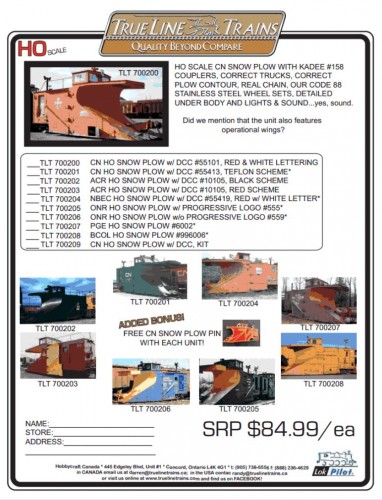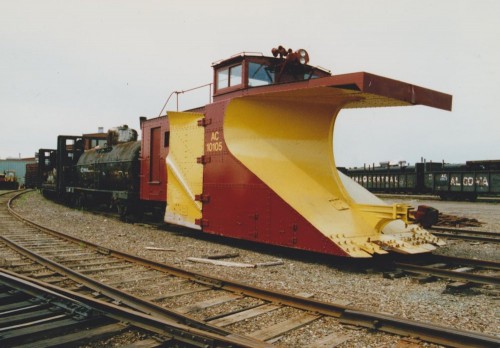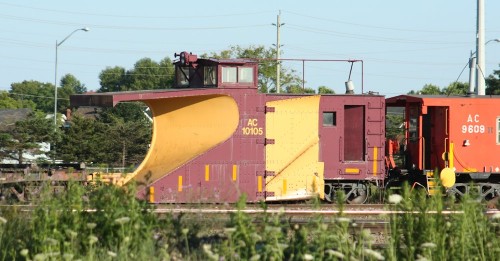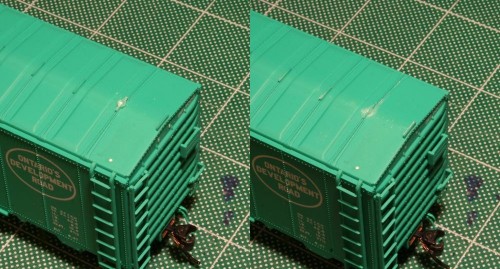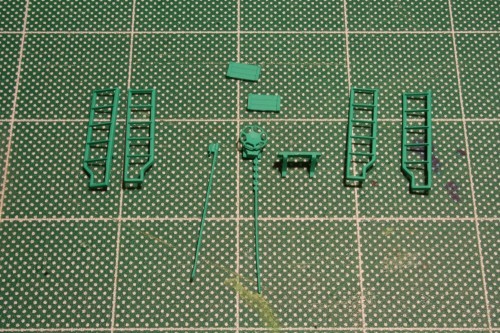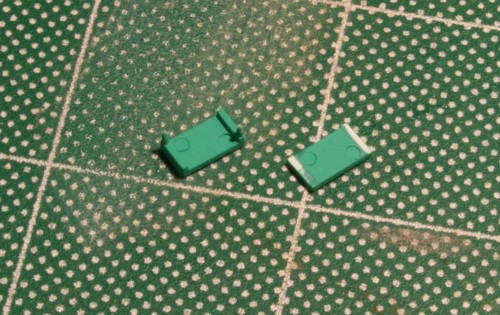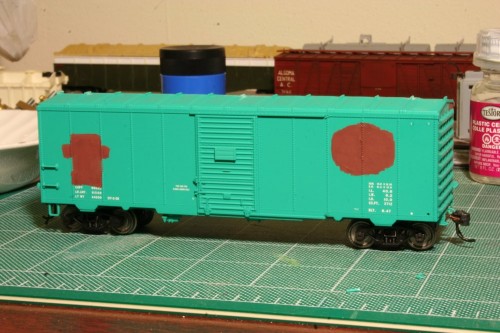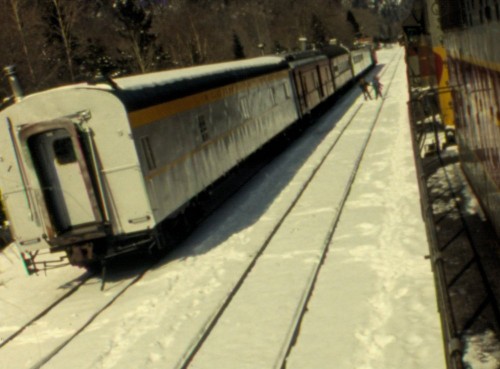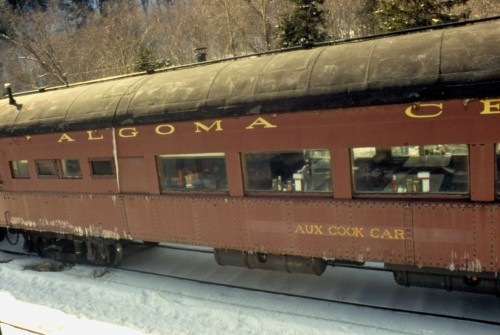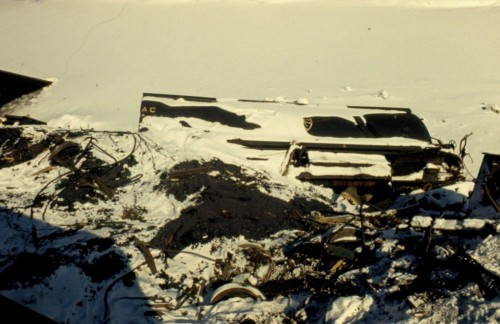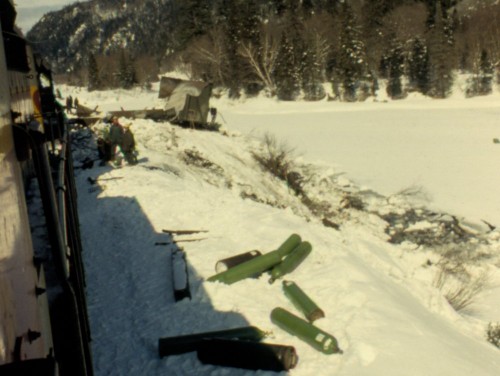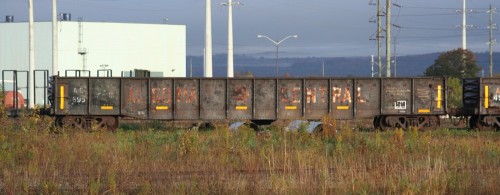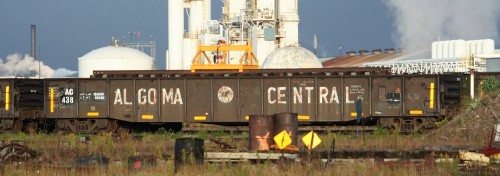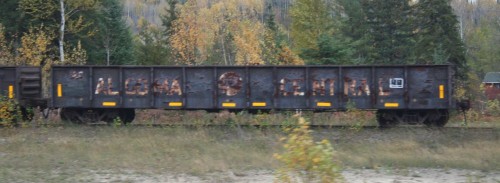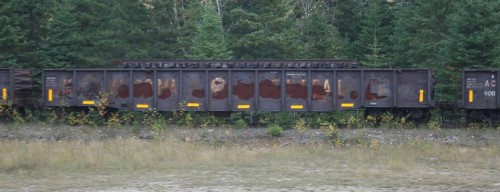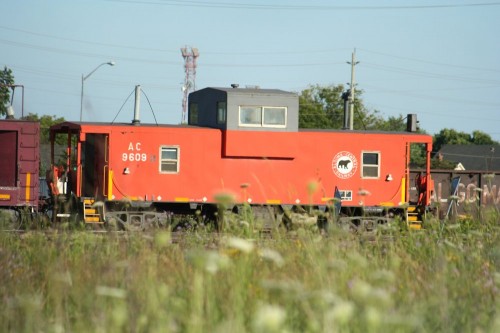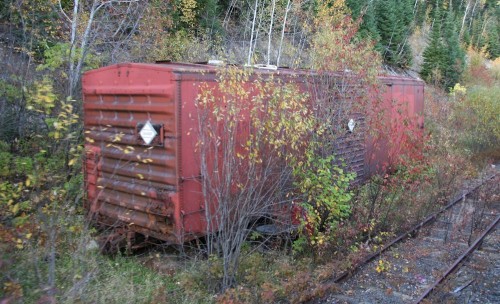This past Friday, True Line Trains made an announcement for their next rolling stock model: a HO scale Canadian Car & Foundry snow plow, based on a common design that was owned by Canadian National, Pacific Great Eastern (later British Columbia Railway), Ontario Northland and Algoma Central. (Apparently they will be doing CP versions with different details next.) A fall 2014 release is currently projected.
Some of the features of the model include DCC controlled operating lights and wing blades, and even sound (air horn, and I’m guessing air noises for the pneumatically operated moveable equipment on the plow). While fascinating to have all of these operating features, I wonder how many people actually model a winter layout and would actually make much use of these, and as I’m modeling a summer period it seems a little excessive for something that will sit on a side track in Hawk Junction yard and essentially be little more than a scenic item (non-DCC/sound versions are not listed as going to be available). But I guess this is still better than trying to track down some long out of production brass model of a CN plow to custom paint. And even with the fancy electronically controlled operating features that probably won’t get used much other to test them out and say “Hey, that’s pretty neat!” this is still probably cheaper than the alternative.
The product list includes Algoma Central: plow AC 10105 and two paint versions are listed: a black scheme, and a red scheme. The black scheme would be the “true” AC colours; the ACR’s two plows, AC 10104* and 10105, were painted black into the 1990s when the ACR was acquired by Wisconsin Central in 1995. Sometime shortly after the WC purchase, the two plows were both repainted into the WC’s maroon and gold colours; this would be the “red” scheme mentioned and pictured (at bottom left) on the TLT ad copy.
(* Note the body details of AC 10104 are slightly different than the 10105, so the 10105 is the only one that this model is truly accurate for.)
Here’s a prototype photo of AC 10105 in the Algoma Central’s black paint for reference:
Note that the prow above the curved plow blade has at some point been modified with a sheet metal extension. This type of modification is extremely common on these plows to help deflect rocks and debris back downwards.
Here’s a later shot of the 10105 repainted into WC maroon and gold:
(Both photos above courtesy of Blair Smith.)
And finally here’s the AC 10105 at Steelton Yard in summer 2013, still in service and waiting for the heavy snows of winter. (My photo.)

